News
DIVE UK: Diving the Rosalie and the Vera
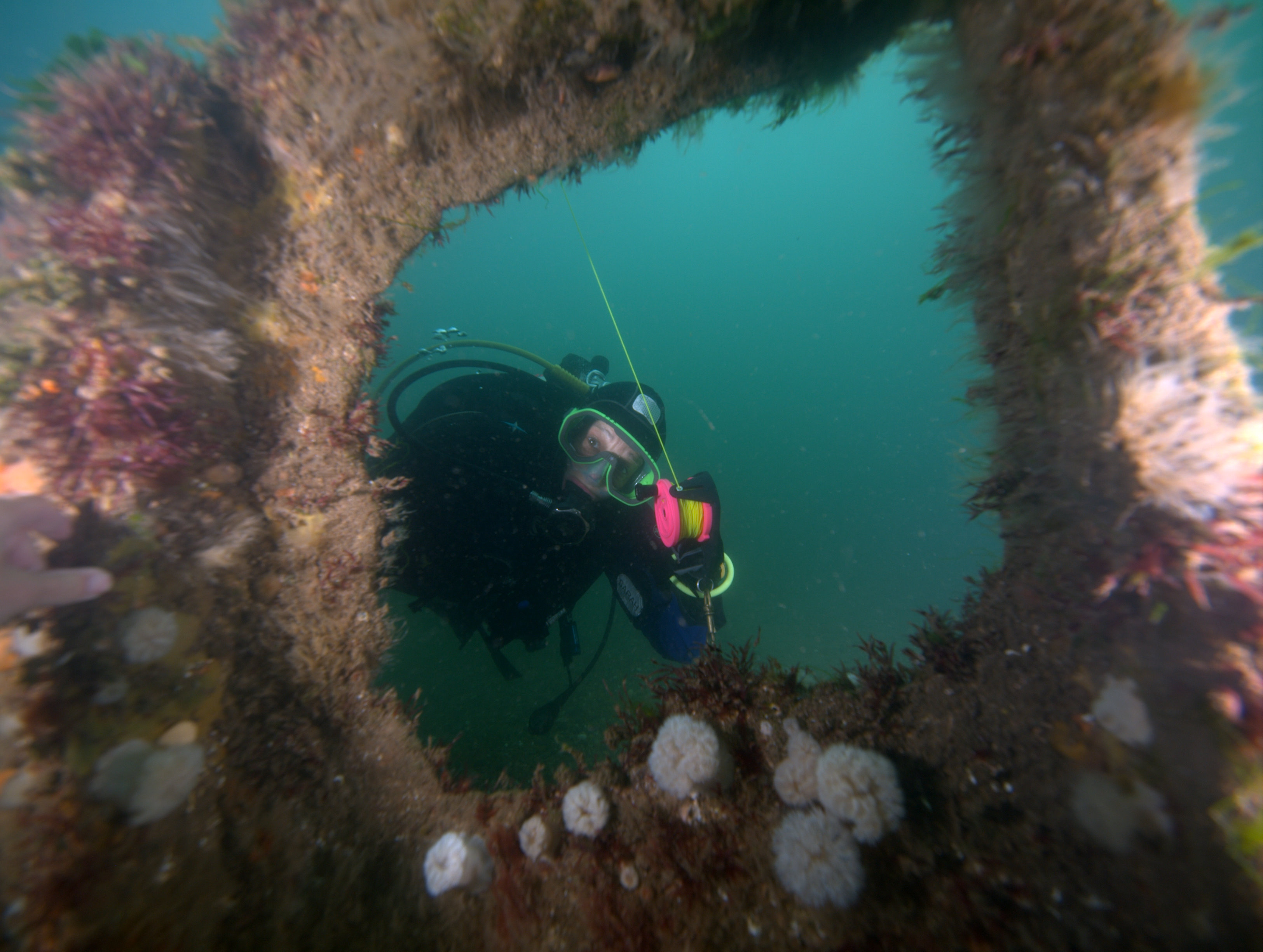
INFO
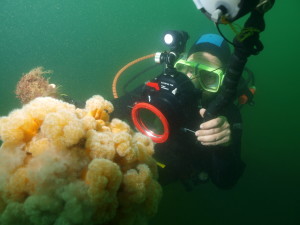 Type of Dive: Easy entry from the beach and short surface swim
Type of Dive: Easy entry from the beach and short surface swim
Experience: Suitable for novice divers
Depth: Approx 10m at high tide
Marine life: Varied
Visibility: From June to September can be 8m
Seabed: Sand
How to get there:
Leave the M11 at junction 9 and then merge with the A11. Follow the A11 up to Norwich and then travel round the outer ring road following signs for the A140 (Cromer). Shortly after passing Asda and B&Q you will arrive at the junction with the Cromer Road. The dive shop is located on this junction and has parking outside the front conservatory.
To access the wrecks continue up the A140 until you reach Cromer and then follow the A149 coast road west until you reach Cley (for The Vera) or Weybourne for the Rosalie.
THE DIVE
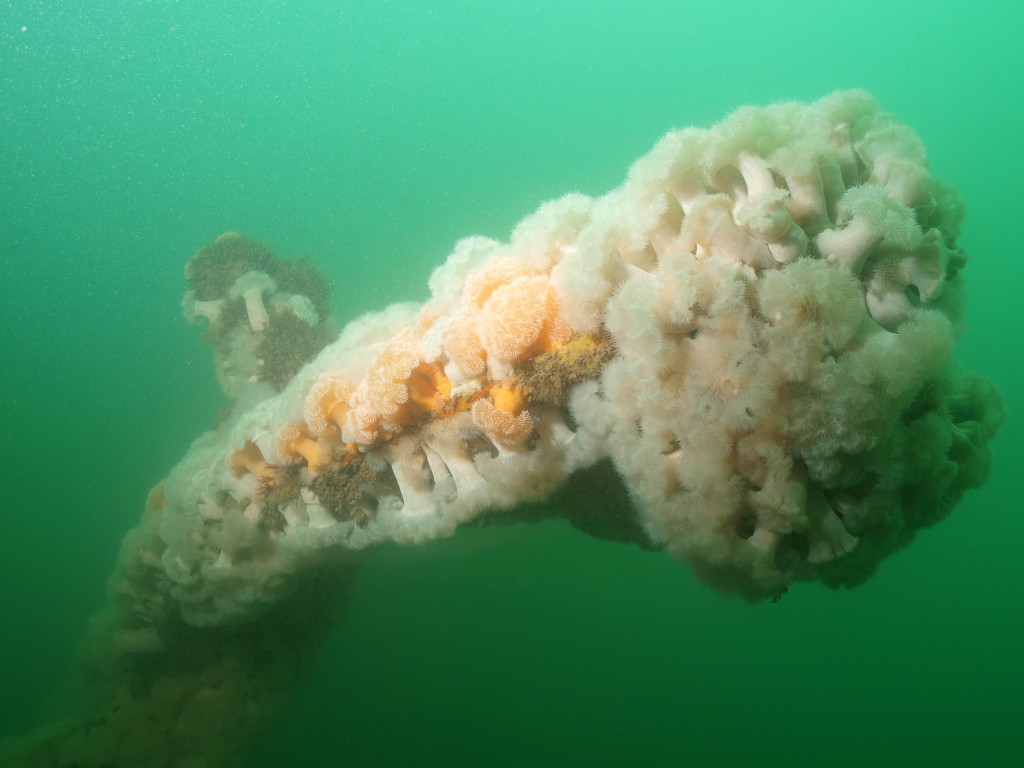 The SS Rosalie was just one of the 206 ships sunk by Otto Steinbrinck, the most celebrated U-boat commander of WW1. During what was an otherwise uneventful voyage from the Tyne to San Francisco, the crew of 17 were unaware that their ship was to become the U–Boat Commander’s next victim. On the evening of the 10th of August 1915 as the ship neared Blakeney Buoy, German U–Boat UB 10 fired a torpedo which hit the port side of the ship; and then, amidst the commotion and under the cover of the sea, made good its escape. With the ship taking on water, the decision was made to beach the 120m long vessel at Weybourne in the hope that the damage could be repaired. She now sits in approximately 8 metres of water just off the shingle beach.
The SS Rosalie was just one of the 206 ships sunk by Otto Steinbrinck, the most celebrated U-boat commander of WW1. During what was an otherwise uneventful voyage from the Tyne to San Francisco, the crew of 17 were unaware that their ship was to become the U–Boat Commander’s next victim. On the evening of the 10th of August 1915 as the ship neared Blakeney Buoy, German U–Boat UB 10 fired a torpedo which hit the port side of the ship; and then, amidst the commotion and under the cover of the sea, made good its escape. With the ship taking on water, the decision was made to beach the 120m long vessel at Weybourne in the hope that the damage could be repaired. She now sits in approximately 8 metres of water just off the shingle beach.
The SS Vera was on voyage from the Tyne to Italy with a cargo of coal, when on the 15th of November 1914 she collided with a Royal Navy minesweeper. Like the Rosalie, the quick thinking crew were able to beach the vessel before she surrendered to the sea and she now sits in shallow water within easy reach of the shore. Although both ships were eventually sold for salvage there is still plenty of wreckage for divers to explore.
Both dive sites have pay and display car parks. For the Rosalie park as near to the steps on the NW corner of the Weybourne beach car park as possible. Then, follow the beach west for 450m. At low tide small sections of the wreck are visible from the shore.
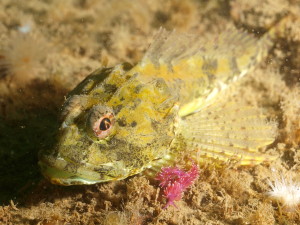 For the Vera, park your vehicle in the SE corner of the beach car park which is opposite the Norfolk Wildlife Trust visitors centre on the A149 Coast Road and then follow the dirt track East for approximately 200m. Again, like the Rosalie you will see wreckage protruding from the surf at low tide.
For the Vera, park your vehicle in the SE corner of the beach car park which is opposite the Norfolk Wildlife Trust visitors centre on the A149 Coast Road and then follow the dirt track East for approximately 200m. Again, like the Rosalie you will see wreckage protruding from the surf at low tide.
It is possible to dive both the Rosalie and the Vera on the same day. Albeit that you will have a six hour surface interval between dives. After deciding which wreck will be your second dive of the day, swim out and place a surface marker buoy on it. This will make it much easier to find when it is completely submerged at high tide.
Both dives need to be carried out at slack tide as otherwise the current is too strong. The centre of slack is approximately 2 hours after low or high tide at Cromer. Visibility is better at slack high tide but the wrecks will be completely submerged making them difficult to find unless you have buoyed them.
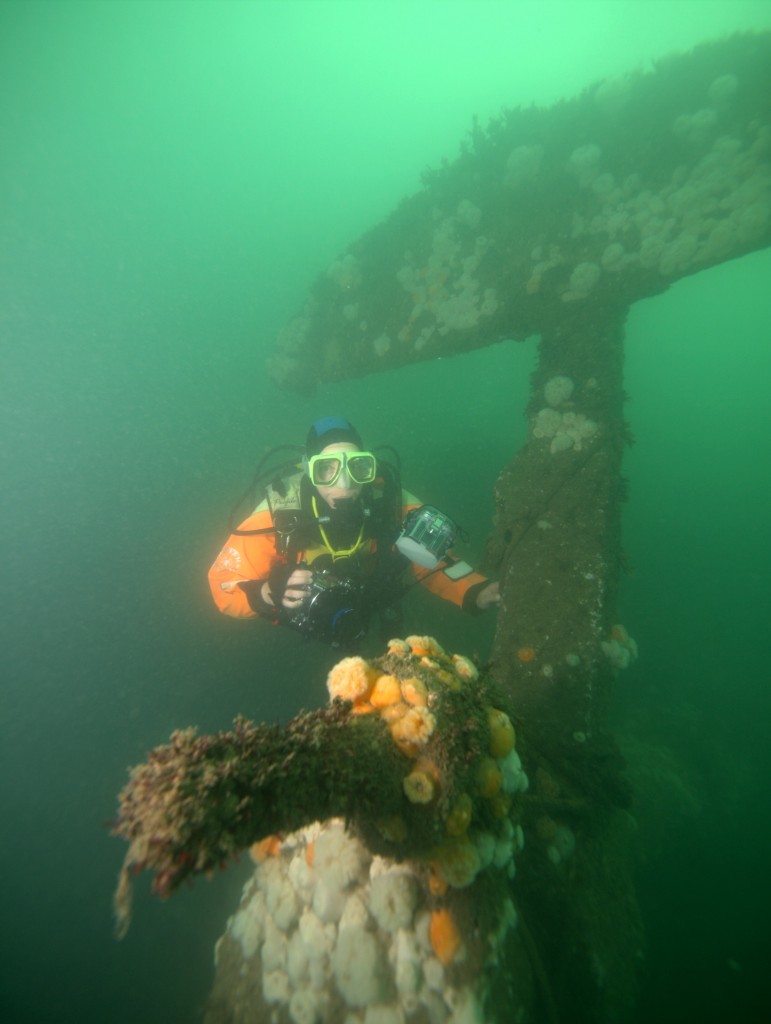 If your first dive is to be the Rosalie, it is a bit of a hike to the entry point – somewhere between 450 and 500m – so best to take your kit to the water’s edge in stages. You will then have a surface swim of around 180m before you reach the protruding wreckage and make your descent.
If your first dive is to be the Rosalie, it is a bit of a hike to the entry point – somewhere between 450 and 500m – so best to take your kit to the water’s edge in stages. You will then have a surface swim of around 180m before you reach the protruding wreckage and make your descent.
If you decide to dive the Vera first, the walk to the entry point is around 200m and the surface swim out to the wreck is 120m, so you can kit up in the car park. Both dives are shallow, so a 10 litre tank will be sufficient for most people and easier to carry along the beach.
On both wrecks you will descend on or around the engine blocks. If you are diving on the Rosalie, the engine block stands roughly 8m proud of the seabed and is an ideal place for you to begin your exploration of the wreck. There are lots of nooks and crannies playing host to a multitude of creatures such as shrimps, velvet swimming crabs and pipefish. In the larger crevices, and hiding amongst the mangled metal, it’s possible that you will encounter more popular crustaceans such as lobsters or edible crabs. You can if you wish stay really shallow in a depth of 5m and head towards the bow of the ship; or, you may want to follow the contour of the open hull and the prop shaft towards the stern of the vessel, which sits in a depth of no more than 10m at high tide. However, bear in mind this is a big wreck; the distance between the engine block and the stern is approximately 60m, so you may not get to see all of it on the one dive. What will astound you as you navigate your way around the site is the sheer number of plumose anemones on this one wreck. On both wrecks you will only get a maximum of an hour before the tide starts to run again, so it may be best on the Rosalie to be near the bow towards the end of the dive, or on the Vera near the port side ribs. This way you will only be a short distance from the shore.
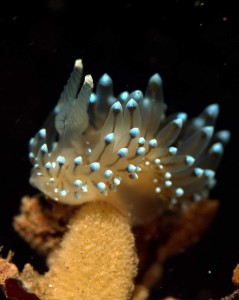
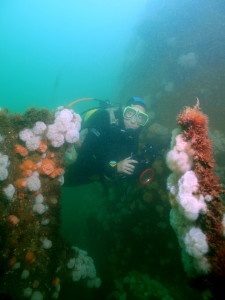 The wreck of the Vera is a very similar dive to that of the Rosalie, only smaller, closer to the shore and shallower. Sitting in a maximum depth of 8m at high tide you will again descend onto the engine block. Although scattered over a wide area, you will find that much of the wreck is lying parallel to the shore, and like the Rosalie is smothered in plumose anemones. To reach certain sections of the wreck it is necessary for you to pass over barren areas of sand. It is these areas, where if you look closely, you will find small flatfish.
The wreck of the Vera is a very similar dive to that of the Rosalie, only smaller, closer to the shore and shallower. Sitting in a maximum depth of 8m at high tide you will again descend onto the engine block. Although scattered over a wide area, you will find that much of the wreck is lying parallel to the shore, and like the Rosalie is smothered in plumose anemones. To reach certain sections of the wreck it is necessary for you to pass over barren areas of sand. It is these areas, where if you look closely, you will find small flatfish.
Towards the stern of the Rosalie and hidden amongst the plumose anemones you will find an abundance of nudibranchs. Crystal sea slugs and violet slugs being the most flamboyant. This is an excellent dive site for the macro photographer. On the wreck of the Vera keep an eye out for porcelain crabs. If you are using a camera it may be wise to use a macro lens.
DIVE CENTRE
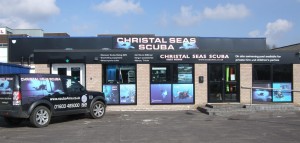 Christal Seas Scuba is a PADI 5Star IDC centre in Norwich, just a short distance from the two wrecks, and is owned and run by Chris and Polly Wake. Chris, a PADI Course Director and Polly, an IDC Staff instructor, started their business over decade ago. After years of dedication and hard work the fruits of their labour is visible for all to see. The centre has just about everything you could possibly want in a dive school. Equipment from a whole host of manufacturers adorn every inch of the shop walls. Behind the counter, cameras, strobes and housings highlight the couple’s passion for underwater photography. Along with their team of experienced Instructors they can offer a wide range of courses from beginner through to the more demanding professional and technical courses. They service and repair equipment, provide air and mixed gasses, arrange holidays and club events and hire equipment to divers wanting to experience UK diving for the very first time. If you require accommodation, just let them know and they can suggest some good local B&Bs and campsites. The dive centre also has its very own rib which can carry 10 divers and two members of crew. This heads out for regular trips to the many wrecks that lie further offshore and spaces can be booked by contacting the dive centre by telephoning the dive shop on 01603 485000, by emailing info@scuba4me.co.uk or via their website: www.scuba4me.co.uk.
Christal Seas Scuba is a PADI 5Star IDC centre in Norwich, just a short distance from the two wrecks, and is owned and run by Chris and Polly Wake. Chris, a PADI Course Director and Polly, an IDC Staff instructor, started their business over decade ago. After years of dedication and hard work the fruits of their labour is visible for all to see. The centre has just about everything you could possibly want in a dive school. Equipment from a whole host of manufacturers adorn every inch of the shop walls. Behind the counter, cameras, strobes and housings highlight the couple’s passion for underwater photography. Along with their team of experienced Instructors they can offer a wide range of courses from beginner through to the more demanding professional and technical courses. They service and repair equipment, provide air and mixed gasses, arrange holidays and club events and hire equipment to divers wanting to experience UK diving for the very first time. If you require accommodation, just let them know and they can suggest some good local B&Bs and campsites. The dive centre also has its very own rib which can carry 10 divers and two members of crew. This heads out for regular trips to the many wrecks that lie further offshore and spaces can be booked by contacting the dive centre by telephoning the dive shop on 01603 485000, by emailing info@scuba4me.co.uk or via their website: www.scuba4me.co.uk.
Sitting on the most easterly point of the British Isles the sites are at the mercy of the elements. With this in mind it is always best to contact the dive centre or the coastguard in advance for up to date weather conditions. In the event that there has been recent high winds, wait until there has been a period of calm weather before attempting to dive here.
Photos courtesy of Rob Spray and Seasearch
News
Book Review: Fire on Monroe Bravo by Fred Lockwood

Fire on Monroe Bravo is the latest book in the Jack Collier series by Fred Lockwood. Our story begins with our lead characters, Jack and Sandro, owners of Marine Salvage & Investigation Company, arriving on the Monroe Bravo Oil & Gas Platform in the North Sea. Having secured a contract for their vessel the MV Stavanger to act as support ship to the platform for TransGlobal Oil, our protagonists are on a celebratory visit.
However almost as soon as they arrive a series of explosions rock the platform, causing huge damage, loss of life and the very real danger of a massive human, ecological and financial disaster.

As the danger mounts for both our heroes and the surviving workers, Jack and Sandro will have to escape the inferno, all while trying to save the platform and the men still trapped unable to help themselves.
The disaster sets the scene for the unfolding story lines following the fate of the platform and our main characters, the police investigation into a suspected terrorist act and the actions of TransGlobal Oil as they attempt to navigate the pubic outcry and financial repercussions.
In his eighth book, Fire on Monroe Bravo, Fred Lockwood delivers an explosive thriller, with plenty of above and in-water drama, and our heroes fighting for survival, what more can you ask for?
We thoroughly recommend this read and look forward to the next in the series. For more information about his book series, you can check out the reviews of his previous books here on Scubaverse.
- Title: Fire On Monroe Bravo
- Author: Fred Lockwood
- ISBN: 979-8325324536
Available in a paperback version and for Kindle from Amazon and book stores.
Blogs
Alonissos: The complete diving destination (Part 1)

In June we were incredibly fortunate to be invited to dive in Alonissos, a small Greek Island in the Sporades island chain located in the North Aegean Sea. While I have long been a big fan of the Greek Islands as a great holiday destination, I had not had the opportunity to do any diving on previous visits and Mike and I were extremely excited to see what Alonissos had to offer both above and below the surface!

The Sporades are easily accessible via the airport in Skiathos (the first island in the chain), which is served by Jet2 flights from all major UK airports from May through October. Numerous ferries and charter boats make island hopping from Skiathos Town a breeze. After an hour boat ride, the picturesque port of Patitiri was a wonderful introduction to Alonissos, where we were met by our gracious hosts Kostas of Albedo Travel and Dias of Alonissos Triton Dive Center. Mike and I were delighted to be staying at the Paradise Hotel, aptly named for its stunning views over the sea and great location for walking to the waterfront.

Alonissos is beautifully situated in the National Marine Park of Alonissos and the Northern Sporades, the largest marine protected area in Europe. The surrounding seas offer fabulous marine life, including incredibly rare species such as the Mediterranean monk seal. They boast deep walls covered in gorgonians and sponges, stunning topography with caverns, swimthroughs and pinnacles, and the first accessible ancient shipwreck from 500BC!

In locations where historical sites have been reported, the waters are largely restricted, but with collaboration between government, underwater archeologists and dive centres, incredible underwater museums are being created for a truly unique diving experience. Alonissos is home to the first of these, the Ancient Shipwreck of Peristera Accessible Underwater Archeological Site. The chance to dive into history (along with reports of healthy reef life and amazing underwater topography) meant Mike and I were keen to get in the water.

Our introduction to the diving around Alonissos was at the Agios Georgios Pinnacles, in the channel between Alonissos and Skopelos. This fantastic site was named “The Chimney,’ and proved to have a huge amount to see. We got to a decent depth here (over 25m), and marvelled at a colourful reef wall with a wonderful swim through whose rocky walls were absolutely covered with life. As well as brilliant topography there was no shortage of macro life here. We saw numerous nudibranchs, five different species in total. The second dive at Mourtias reef nearby was a shallower dive along a nice wall with lots of crevices. Several moray eels and grouper called this site home. We enjoyed looking in the crevices for lobster and smaller benthic life, such as cup corals and tunicates.

Our itinerary allowed us two dives a day with afternoons left to explore the island with our hire car and evenings to enjoy the famous Greek hospitality. This proved to be a lovely mix of in-water and land based diversions.

The next days diving to the Gorgonian Gardens and Triton’s Cave was to be even better! These two stunning sites are nothing short of fabulous. The Gorgonian Gardens was a deep wall near to the Agios Georgios islands. The ever-present currents in this deep channel meant that the sea life was amazing … the namesake Gorgonian sea fans dotted the wall at a depth of 30 to 50 meters, getting ever larger the deeper we went. Above 30m was by no means less beautiful, with sponges, corals, scorpionfish, moray eels and some rare and colourful nudibranchs.

The second shallower dive of the day was to Triton’s Cave or the Cavern of Skopelos, on the east side of that island. The spectacular rock formations had wild striations both above and below the water making a truly epic topography. The cavern entrance was at 14m, and big enough for a buddy pair, winding up to 6m and passing two beautiful windows out into the blue. Emerging from the cavern, the light at the shallower depths and the incredible rock formations made for a fantastic gentle swimming safety stop and we all surfaced by the boat with massive grins.

Check out our next blog :Alonissos: The complete diving destination (Part 2)” to hear about our amazing dive on the 2500 year old Peristera Wreck!
Thanks to:
Alonissos Triton Dive Center https://bestdivingingreece.com/
Albedo Travel https://alonissosholidays.com/activities/
Paradise Hotel https://paradise-hotel.gr/
Alonissos Municipality https://alonissos.gr/en/
-

 Blogs2 months ago
Blogs2 months agoDiving With… Nico, Ocean Earth Travels, Indonesia
-

 News1 month ago
News1 month agoMurex Bangka Announce New Oceanfront Cottages & Beachfront Dining
-

 Blogs2 months ago
Blogs2 months agoA new idea in freediving from RAID
-

 Marine Life & Conservation1 month ago
Marine Life & Conservation1 month agoIceland issue millionaire whale hunter a licence to murder 128 vulnerable fin whales
-

 Marine Life & Conservation2 months ago
Marine Life & Conservation2 months agoThe Shark Trust Great Shark Snapshot is back
-

 News3 months ago
News3 months agoCharting New Waters; NovoScuba Goes Global with the Launch of their Revolutionary Dive Training Agency!
-

 Gear News1 month ago
Gear News1 month agoNew Suunto Ocean – a dive computer and GPS sports watch in one for adventures below and above the surface
-

 Marine Life & Conservation Blogs2 months ago
Marine Life & Conservation Blogs2 months agoBook Review: Plankton















